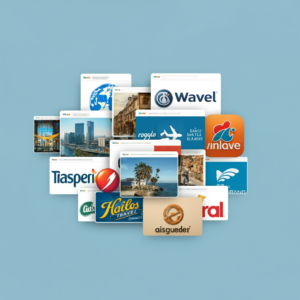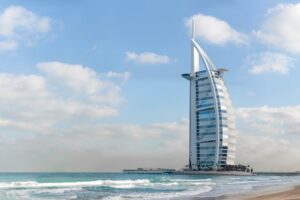Considering traveling to Morocco? This is your one-stop resource for all the information you need to plan a trip to Morocco!
I just returned from a fantastic trip to Morocco, but I also learnt some very valuable lessons. I’ll walk you through every step of organizing a vacation to Morocco, including what to pack, when to go, religious festivals, and what to do there.
By the time you finish reading this, I hope you’ll feel comfortable enough to start organizing your own travel to this fascinating nation. Here is my travel guide to Morocco without further ado!
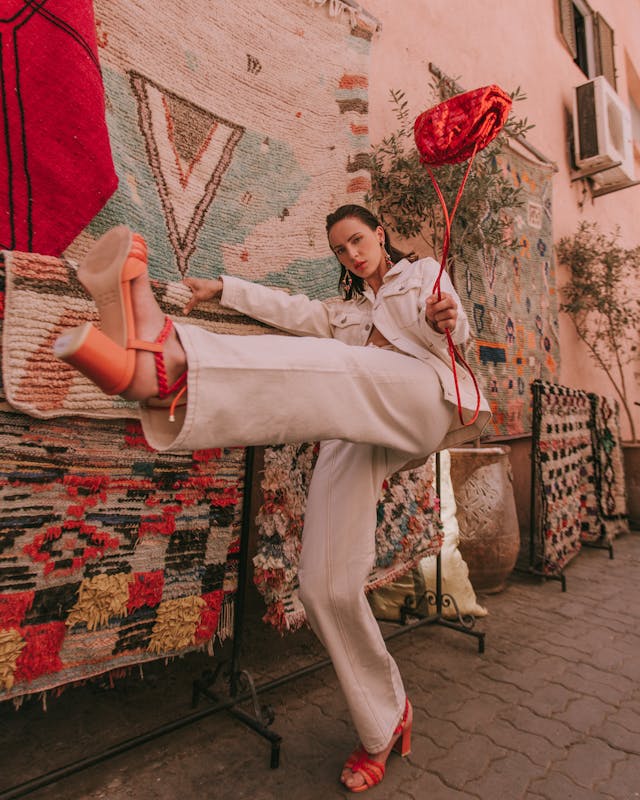
Is a Visa Required for Morocco?
No, if the stay in Morocco is shorter than ninety days, visitors from the US, Canada, the UK, EU nations, Australia, New Zealand, and many more countries are exempt from needing a visa.
Furthermore, Morocco is not presently subject to any COVID-19-related travel restrictions or limitations.
Morocco: Where Is It?
Northwestern Africa is home to Morocco. It lies across the Strait of Gibraltar, immediately underneath Spain. Situated in Africa, only a short distance from Europe, and sharing cultural ties with the Arab and Berber communities, it’s in a unique location.
How to Get There: Morocco
It would be useful for a Morocco vacation preparation guide to include directions (lol). Casablanca Airport (CMN) is Morocco’s main airport. This is most likely the landing spot for your flight. The Marrakech Menara Airport (RAK) is another. Both airports are served by a large number of major airlines, such as American Airlines, Delta, Emirates, British Airways, and Air Canada.
However, there are a few distinctions. For instance, Marrakech Menara Airport is not serviced by United Airlines, but Casablanca Airport is. Your travel schedule may dictate that you arrive at one airport and depart from another. I think most of the passengers did it, based on our schedule. We took a plane to Casablanca and then departed from Marrakech.
Another way to go to Morocco is via boat from Spain. The voyage may take as little as one hour and thirty minutes or as long as thirty-six hours, depending on the route. There are several ports of entry and exit. The ports of Algeciras and Tarifa, which arrive in Tangier, are the quickest ferry routes departing from Spain. Sixty to ninety minutes pass. Tangier, Morocco, to Barcelona, Spain, travels in around 28 to 36 hours. You may also go to Morocco with your automobile by ship. It requires more preparation to do this.
How to Navigate Morocco
Trains
Morocco has a strong train system that is both pleasant and, for the most part, punctual. The main northern cities of the nation are connected by reasonably priced trains.
Buses
Around the nation, a number of commercial and public bus companies link cities. Buses may be crowded and have a sluggish speed. You are nearly always better off using one of the two taxi alternatives below, unless you are traveling a very great distance.
Taxi
In Morocco, there are two types of taxis: petit taxis and grand taxis.
Three people may fit in petite taxis, which are smaller cars. They are the most often used mode of transportation in cities, and there are many of them.
Grand taxis are bigger cars that can often accommodate six people. Although you may use them to go inside a city, their primary use is to move between cities.
Morocco does not yet have Uber, although several big cities do have the “Careem” app accessible as a substitute. There are two cab applications in Marrakech: “Roby” and “Heetch.” Ask the front desk or concierge if you are staying in a hotel or riad to make arrangements for a driver or vehicle.
Aircraft
If your destinations are big cities that are far apart, you have the option of taking a domestic flight. Royal Air Maroc and Air Arabia Maroc are the two domestic carriers.
When Is the Best Time to Go to Morocco?
Morocco’s prime seasons are spring and autumn, which run from March to May (though you should usually schedule your trip around Ramadan) and September to November. You’re not in the hottest or coldest part of the year and it’s not summer, when most tourists visit. We visited in the start of June. It was hardly crowded, and the weather was beautiful.
Organizing During Religious Holidays
Islam is the recognized religion of Morocco. The majority of religious holidays won’t have a significant impact on your trip, however before you book a trip to Morocco, you should be aware of Ramadan.
Usually, Ramadan lasts 30 days, starting in March or April and ending in April or May. Muslims refrain from eating and drinking anything from sunrise to dusk throughout Ramadan.
The majority of the neighborhood’s cafés and eateries are thus closed throughout the day. Some shut their doors for the whole month. Although you’re not required to follow Ramadan if you’re not a Muslim, the brief closures may affect your visit.
It can be worthwhile to visit Morocco during Ramadan if you don’t mind this. There are festivities everywhere in the cities as the sun sets!
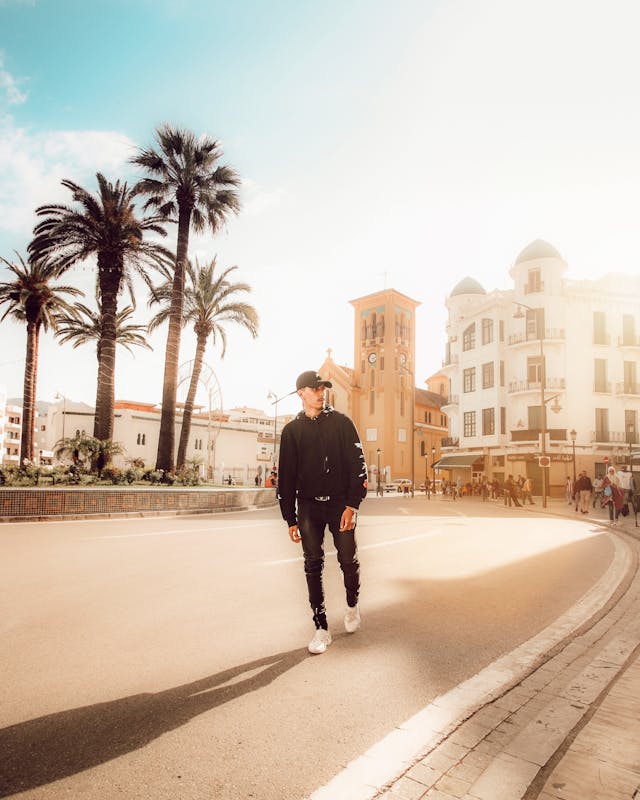
Morocco’s Weather and Seasons
The climate of northern cities such as Tangier and Casablanca is Mediterranean. It stays cool thanks to the sea air, even in the sweltering summer months. As a point of comparison, Casablanca typically experiences summer temperatures of 73 °F (23 °C) and winter temperatures of 55 °F (13 °C).
In Central and Southern Morocco, cities like Fes and Marrakech have unbearably hot summers. Marrakech has summer temperatures that can reach triple digits, with highs in the 90s! 54 °F (12 °C) is the average winter temperature.
Morocco has the wettest months from November to March, particularly in the coastal areas. Remember that while making travel plans to Morocco.
Words
Standard Moroccan Berber and Modern Standard Arabic are the two official languages of Morocco.
However, Moroccan Arabic, a variety of Modern Standard Arabic, and other Moroccan Berber dialects are the most widely spoken languages.
Is English Spoken in Morocco?
Speaking English is not common in Morocco. Still, the majority of those employed in the tourist sector are fluent in basic English.
Morocco’s Currency Conversion
The Moroccan Dirham (MAD) is the unit of currency in Morocco. You should visit an ATM as soon as you can since many Moroccan businesses only take cash. Although Moroccan ATMs often provide reasonable exchange rates, you could also think about changing money at the airport. Most major retailers and eateries (not the smaller ones in the souks) accept credit cards; American Express is often not accepted. Carrying cash is beneficial for tipping and buying in the souks.
How to Outfit
Moroccan women often follow Muslim traditions by dressing modestly.
I advise wearing modest clothing, such as blouses that cover your shoulders and breast and light-colored slacks or shorts that fall below your knees. Long gowns and skirts (below the knee) are additional options. Your legs, chest, and shoulders should all be covered as a general rule. When you attend mosques, cover your chest and shoulders. Although it wasn’t necessary, it was advisable to pack a scarf in case. In Marrakech, clothing was more laid back. Shoes are required to be taken off while entering mosques, for both men and women. Pack a bag to hold your shoes.
Where to Stay in Morocco
When visiting Moroccan cities, staying in a riad is a popular choice. These days, a riad is a hotel or guesthouse with individual rooms and communal gardens and common facilities. Frequently, they are remodeled houses and palaces. The building’s architecture is stunning. They are handy for eating and shopping since many are located inside the Medinas. It is advisable that you examine reviews with careful research. Try searching for hotels and resorts outside of the Medina if you’d rather be somewhere quieter.
Where in Morocco to Go and What to Do
Are you unsure about where to travel in Morocco? Every city has an own charm, from colorful souks and Medinas to exquisite mosques and well-kept gardens. My suggestions for things to do in Morocco are as follows:
Casablanca
Although Casablanca isn’t Morocco’s official capital, it certainly seems like it in this vibrant metropolis. While yet having some historical elements, it is quite contemporary.
One of the greatest things to do in Morocco is to visit the Hassan II Mosque, one of the biggest mosques in the world and one of the few in the nation that is open to non-Muslims.
Mohamed V Square is a busy center where people congregate and enjoy the festive mood. Look around the plaza and see what the neighborhood merchants have to offer.
A one-of-a-kind museum highlighting the 2,000-year history of the Jewish community in Morocco is the Museum of Moroccan Judaism. Seek insight into an intricate facet of the nation’s past.
Fes
Fes is very old and historic, the antithesis of Casablanca. You’ll go through a lively Medina and imposing mosques as narrow lanes entwine.
The magnificent seven front gates of the Royal Palace are open for anyone to see and photograph, even if entry is not permitted. In the 1960s, this palace was constructed. The workmanship is incredible!
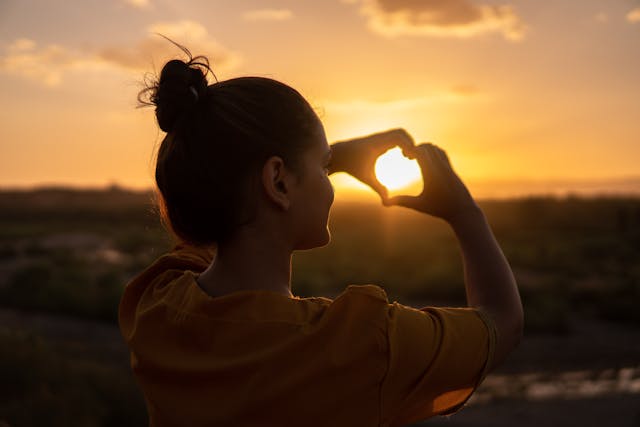
Jewish Cemetery: On a hilltop, you’ll see white graves with unusual shapes. Founded in 1883, this large Jewish cemetery is located here. In 2019, the graves received new paint. The cemetery has a few notables who were revered by both Muslims and Jews.
The 14th century saw the founding of the Muslim educational institution Madrasa Bou Inania. With its green tiles, marble columns, and superb Moroccan workmanship, the building is breathtaking.
The Museum of Arms is located at Borj Nord, a late 16th-century fortification. Among the hundreds of artifacts from the past is a cannon that was used in a battle in the sixteenth century.
One of the largest Medinas in the nation, the Medina in Fes is a historic neighborhood with homes, businesses, and marketplaces. This is the place to go in Morocco if you’ve been wondering where to go for a real experience. However, even with a guide, I found marketplaces to be overwhelming, having seen them all over the globe. Thus, exercise caution and keep your possessions near to hand. These narrow alleyways make it simple to go lost as well.

